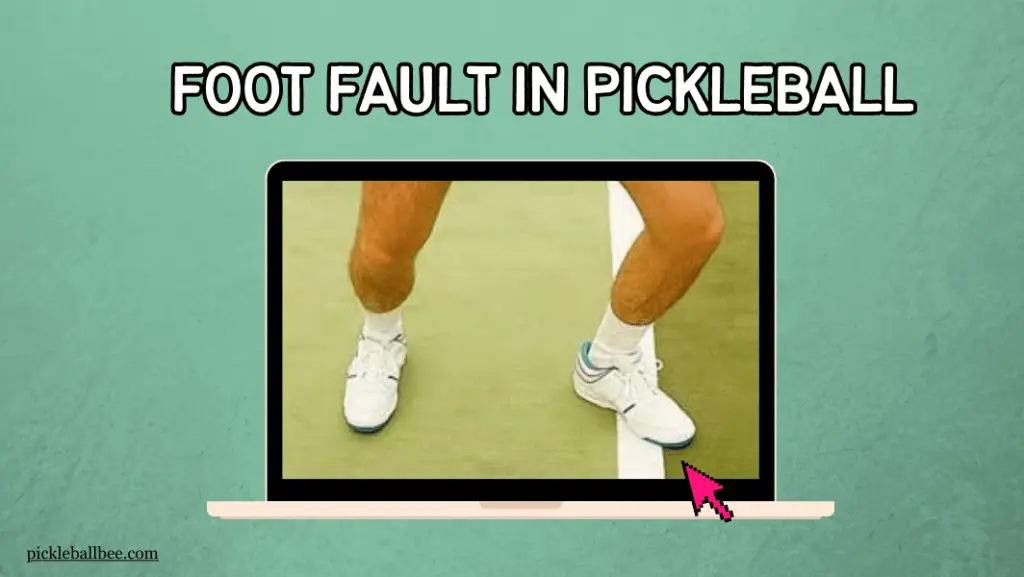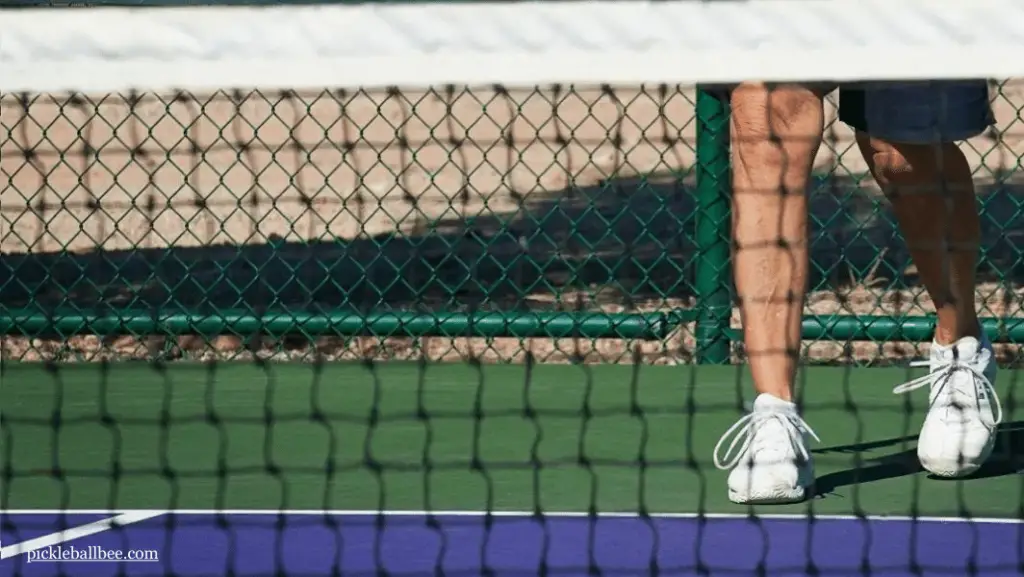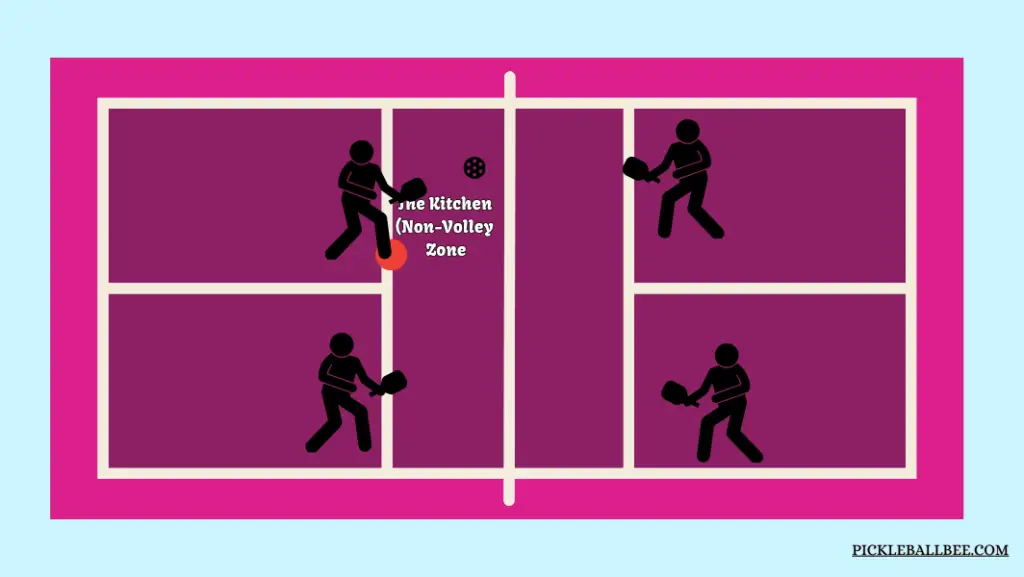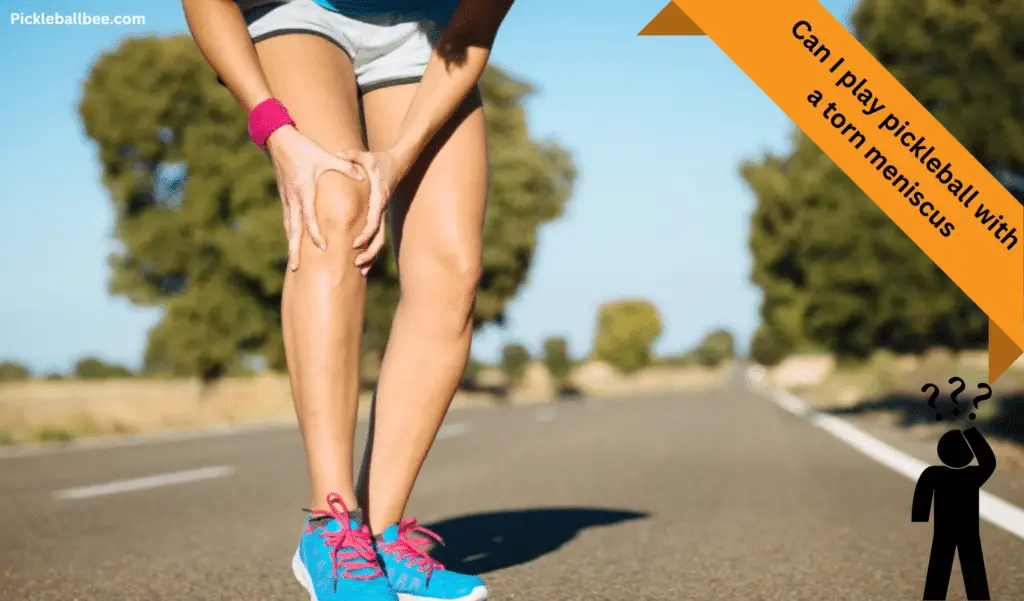In Pickleball, foot faults are crucial yet commonly missed errors, impacting the flow and fairness of the game. Grasping the essence of a foot fault is essential for any player looking to excel. These faults occur when a player steps into the non-volley zone during a serve or volleys from an incorrect position. Mastery in Pickleball involves detecting these faults in oneself, and equally, being astute in spotting them in your partner or opponents.
It’s a skill that enhances not just personal play but also the overall quality of the game. Whether you are a beginner or a seasoned player, regularly observing and correcting foot faults, both in yourself and others, is a significant aspect of the sport that contributes to a deeper understanding and respect for the game’s integrity.

Table of Contents
What is a foot fault in pickleball?
In Pickleball, foot faults are a fundamental aspect of the game that players must understand and avoid:
- Categories of Foot Faults: Foot faults in pickleball fall into two main categories. The first involves serving infractions, where players must be cautious not to step over the service line or baseline before making contact with the ball. The second category includes faults at the non-volley zone line, where stepping on or inside this line during a volley is prohibited.
- Serving Faults: When serving, a player commits a foot fault if they step on or over the service line. It’s also important not to cross the imaginary lines extending from the centre line or sideline before hitting the ball.
- Non-Volley Zone Line Faults: At the non-volley zone line, faults occur if a player’s momentum from a shot carries them into the zone, or if they step on or inside the line during a volley.
In a game of Pickleball, adhering to these rules is crucial. A foot fault, whether it occurs during a serve or at the non-volley zone line, can significantly impact the flow and fairness of a match. Players need to develop an acute awareness of their positioning on the court to prevent these common errors. This understanding not only helps in avoiding penalties but also in maintaining the integrity and spirit of the game. For players at all levels, from beginners to seasoned veterans, mastering the rules of foot faults is an essential part of becoming a skilled and respectful Pickleball player.
Can your foot cross the line when serving in pickleball?

In pickleball, one of the fundamental rules during a serve is that your foot must not cross the service line. This is a crucial aspect to remember for both beginners and seasoned players alike. When you’re serving, it’s important to ensure that your feet stay behind the baseline throughout the serving action. The moment your foot crosses this line before you make contact with the ball, it’s considered a foot fault, which can lead to the loss of a serve.
Adhering to this rule is essential not only for playing by the book but also for maintaining fairness in the game. Players should practice their serves with an emphasis on foot placement to avoid these common serving errors. Developing a habit of serving correctly, with your feet positioned properly, will enhance your overall gameplay and ensure that you’re playing within the spirit and rules of pickleball.
Preventing Foot Faults
- Awareness of Court Lines: The first step to avoiding foot faults is being aware of the court lines at all times. Practice serves and volleys while being conscious of your foot placement about the baseline and non-volley zone lines.
- Consistent Serve Technique: Develop a consistent serving technique that keeps your feet behind the baseline until after you’ve hit the ball. You can practice this by doing repetitive serves and focusing on your foot movement.
- Non-Volley Zone Discipline: When playing near the kitchen, be mindful of your momentum. Train yourself to stop before the kitchen line when you are about to volley. It’s better to miss a shot than to commit a foot fault.
- Footwork Drills: Engage in footwork drills that enhance your agility and control on the court. This will help in maintaining balance and avoiding inadvertent steps that may lead to foot faults.
- Video Analysis: Recording your gameplay and analyzing it can provide insights into when and how you might be committing foot faults. This will help you make necessary adjustments in your play style.
- Learning from Others: Watching experienced players and how they handle their foot placement, especially during serves and volleys, can be incredibly educational. Pay attention to their movement and try to emulate their technique in your practice sessions.
- Play with Knowledgeable Players: Regularly playing with knowledgeable players or a coach can help. They can call out foot faults during the game, providing immediate feedback and learning opportunities.
- Mental Focus: Staying mentally focused during the game is essential. A lapse in concentration can lead to foot faults, so practising mindfulness and concentration techniques can be beneficial.
In conclusion, avoiding foot faults in pickleball requires a combination of awareness, technique, and practice. Understanding the rules thoroughly and consistently practising with these rules in mind will significantly reduce the chances of committing foot faults. Remember, the key to success in pickleball, as in any sport, lies in the mastery of its fundamentals, and footwork is undoubtedly a fundamental aspect of this dynamic game.
Can my foot ever enter the kitchen in pickleball?

In Pickleball, the kitchen represents a unique area of play, and understanding when you can enter it is crucial. During a game, you’re allowed to step into the kitchen to hit the ball, but there’s a catch: the ball must have bounced on the ground first. This means you can’t volley a ball in the air while standing in the kitchen.
Additionally, you can be in the kitchen while your partner is volleying from outside the kitchen. The primary rule to remember is that the act of volleying the ball directly from the air is prohibited if you’re within the kitchen. Navigating this rule requires both skill and strategy, as it’s essential to position yourself correctly to make effective shots without committing a foot fault.
ALSO READ: PICKLEBALL DOUBLE STRATEGY
Who can call foot fault in pickleball?
In Pickleball, especially during non-officiated play, the responsibility of calling a foot fault often falls to the players themselves. According to Section 9i, any player on either team can call non-volley-zone faults. This rule empowers players to maintain fairness in the absence of an official referee. However, it also introduces a level of subjectivity, as the benefit of the doubt goes to the player who makes the call.
In scenarios where there’s an argument about a foot fault, particularly in recreational play, the priority is given to the team that calls the fault. This approach ensures that gameplay remains fair and enjoyable, but it also emphasizes the importance of knowing and respecting the rules among all players.
During Refereed Matches
In Pickleball, the role of calling foot faults often lies with the referees, especially in tournament play. However, it’s a hard job and, from time to time, referees might miss a fault. This was evident in a big match I played in a large tournament, where after losing, spectators suggested that some faults were missed. This prompted me to review the video, where I found instances of faults not called. Such oversights can make the difference between winning and losing. It can be frustrating for players, but it’s important to stay focused and not let it disrupt your game. As a player, you must also be vigilant.
Often, it’s easy to miss seeing the whole court when you’re intensely following the ball with your eyes. In my experience as a teacher, I’ve learned the importance of observing not just the ball but also the opponents, partner, and other team players, understanding their positions and movements across the court. Developing this practice is important, as it enhances your ability to notice such faults yourself, contributing to a fair and enjoyable game.
Navigating Foot Fault Calls in Recreational Pickleball
During recreational play in Pickleball, the etiquette of calling foot faults can be a bit nuanced. When I was playing with a local group recently, a question arose in the middle of the point: “Should we call foot faults on each other?” This is particularly tricky when you don’t know the people well and don’t want to be perceived as rude, especially if it’s not their custom. In the spirit of the game, learning when and how to call faults is as important as playing.
Some groups have a practice of calling faults themselves, be it on their partner or an opponent. It’s not about being mean or rude; rather, it’s about helping each other and maintaining the integrity of the game.
This approach is important for developing the right habits for tournament play. I’ve played in groups where foot faults were called often and flagrantly, leading to safety issues—once, I was hit in the face by a player who stepped inside the NVZ. Especially during indoor play, where players are close to the net, it’s crucial to be aware of everyone’s positions to avoid accidentally hitting an opponent with the paddle.
I always suggest talking with your regular playgroup about calling foot faults on one another. If this idea is shunned, at the end of each point, take a moment to freeze and check your feet. Are they in the right spot? Calling yourself on foot faults and encouraging others to do the same fosters a safer environment and helps everyone develop better habits.
ALSO READ: PICKLEBALL SINGLE STRATEGY
FAQs:
-
What is stacking in pickleball?
Stacking in pickleball is a strategic formation where both players on a team position themselves on the same side of the court. This tactic is used to optimize strengths, such as keeping a stronger forehand in the middle, and to create advantageous angles and court coverage during the game.
-
How many faults in pickleball?
In pickleball, faults are crucial in determining the flow and outcome of the game. There are two main types of faults: Service Faults and Playing Faults. Service Faults occur when the server breaks rules related to the serve. This includes serving from outside the designated service area, failing to execute an underhand serve, serving before the receiver is ready, or stepping on the baseline during the serve. On the other hand, Playing Faults cover a wider range of mistakes during general play. These can include hitting the ball out of bounds, volleying from within the non-volley zone (also known as the kitchen), the ball not clearing the net, letting the ball bounce more than once before striking it, or stepping into the non-volley zone while volleying the ball. Each fault results in a loss of a point or a change in service. It’s essential for players to understand and avoid these faults to ensure a fair and competitive game of pickleball.
-
What is a foul in pickleball?
In pickleball, a “foul” isn’t a term typically used within the official rules of the game. Instead, the game uses the term “fault” to refer to violations of its rules. A fault in pickleball occurs when a player breaks any of the established rules, and it results in a stoppage of play and a loss of the rally or serve for the team that committed the fault.


